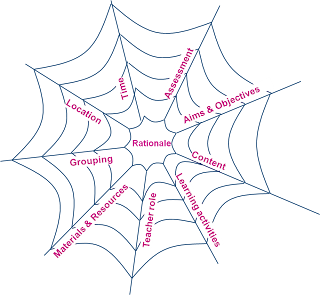In my previous blog post I explained what TPACK is about according to my interpretation. In this post I will reflect on what I have learned so far and what the added value of TPACK is.
In my first post I wrote about flexibility. I’ve learned that flexibility isn’t only about distance. There are different kinds of flexibility, like flexibility related to content or to time. When looking at the TPACK model I can conclude that the model is flexible. There is no one right way in which the model should be used. Teachers can choose if they want to start by selecting a technology, pedagogy or content. What is important is that everything fits together in a certain context.
I also think that the TPACK model can support flexibility. I think the model can make teachers more aware of the possibilities they have to integrate technology, content and pedagogy. Using technology into the lesson has implications for the content and pedagogy. If teachers gained some experience in working with the model they probably will become more flexible in the way they teach.
I also think that the TPACK model can support flexibility. I think the model can make teachers more aware of the possibilities they have to integrate technology, content and pedagogy. Using technology into the lesson has implications for the content and pedagogy. If teachers gained some experience in working with the model they probably will become more flexible in the way they teach.
My second post was about different pedagogical approaches. From writing this post I’ve learned how to combine a specific pedagogical approach with technology. I realized that the developments in technology influence the pedagogical approaches. Therefore it is possible that new pedagogies will be created. By using the TPACK model, teachers maybe will become less anxious to try new or other pedagogies. Because by using the model (in a way that everything matches together) they ensure that the lesson they create will be effective.
Koehler and Mishra (2009) describe technology not only as digital materials like mobile phones, interactive whiteboard and computers, but also as traditional materials like a chalkboard. Most teachers know how to use the traditional materials, but have problems to use the digital materials. The TPACK model can help teachers in making them more capable to also use the digital materials as well. Because, as I mentioned before, it can make teachers aware of the possibilities and the added value of different kinds of technologies.
Concluding I think the main added value of the TPACK framework is that it gives insight in the importance of integrating the three knowledge domains. The framework also provides a structured manner of thinking about your education. You can use it to design your lesson, but also to reflect on the lesson you gave.
As you may have read in my previous post I tried myself to design a lesson and think about all the aspects of the TPACK framework. I experienced myself that it’s not that easy to think about all the components separately. I think teachers also experience difficulty with thinking about their education in terms of separate knowledge domains, because when teaching they experience the impact of the big picture. Also most teachers have been provided with inadequate teacher education on this topic. Teacher education must take into account that a one size-fits-all approach to technology doesn’t work, because teachers operate in diverse contexts. Therefore I think it’s important that TPACK becomes a part of teacher training/education. But that’s not enough; also in-service teachers should know how to apply TPACK. To achieve this, the school leader should support teachers. For example by giving workshops in which they can experience themselves what the added value of TPACK is. Experiencing it yourself has a bigger impact then when someone tells you to do it. Of course this also means that the school leader gives time and provides different kinds of technologies to let the teachers practice.
As you may have read in my previous post I tried myself to design a lesson and think about all the aspects of the TPACK framework. I experienced myself that it’s not that easy to think about all the components separately. I think teachers also experience difficulty with thinking about their education in terms of separate knowledge domains, because when teaching they experience the impact of the big picture. Also most teachers have been provided with inadequate teacher education on this topic. Teacher education must take into account that a one size-fits-all approach to technology doesn’t work, because teachers operate in diverse contexts. Therefore I think it’s important that TPACK becomes a part of teacher training/education. But that’s not enough; also in-service teachers should know how to apply TPACK. To achieve this, the school leader should support teachers. For example by giving workshops in which they can experience themselves what the added value of TPACK is. Experiencing it yourself has a bigger impact then when someone tells you to do it. Of course this also means that the school leader gives time and provides different kinds of technologies to let the teachers practice.
What do you think is the best way to introduce TPACK to teachers?
Reference
Koehler, M. J., & Mishra, P. (2009). What is technological pedagogical content knowledge? Contemporary Issues in Technology and Teacher Education, 9(1), 60-70.






